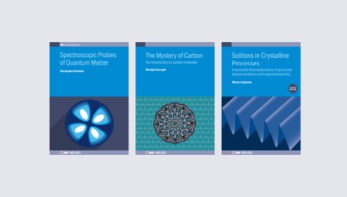NB: The publication on which this article is based has been retracted by its authors. The retraction followed an investigation into scientific misconduct by J Hendrik Schön. We are leaving this article here for archival purposes. Further information can be found at http://physicsweb.org/article/news/6/9/15
Most materials only become superconducting when they are cooled to low temperatures. In this state the electrons inside the material overcome their natural repulsion and travel through the material in pairs. It has long been suspected that if the surface of a material was doped with enough electrons, the electrons would be pulled into the interface region, allowing a similar electron-pairing effect to occur.
Schön and colleagues used a field-effect transistor to induce three electrons per carbon-60 molecule into the top layer of their device. They discovered that when a positive voltage is applied to the crystal, the carbon switches into a superconducting state. This effect survives up to a temperature of 11 Kelvin.



